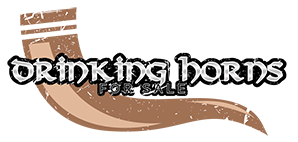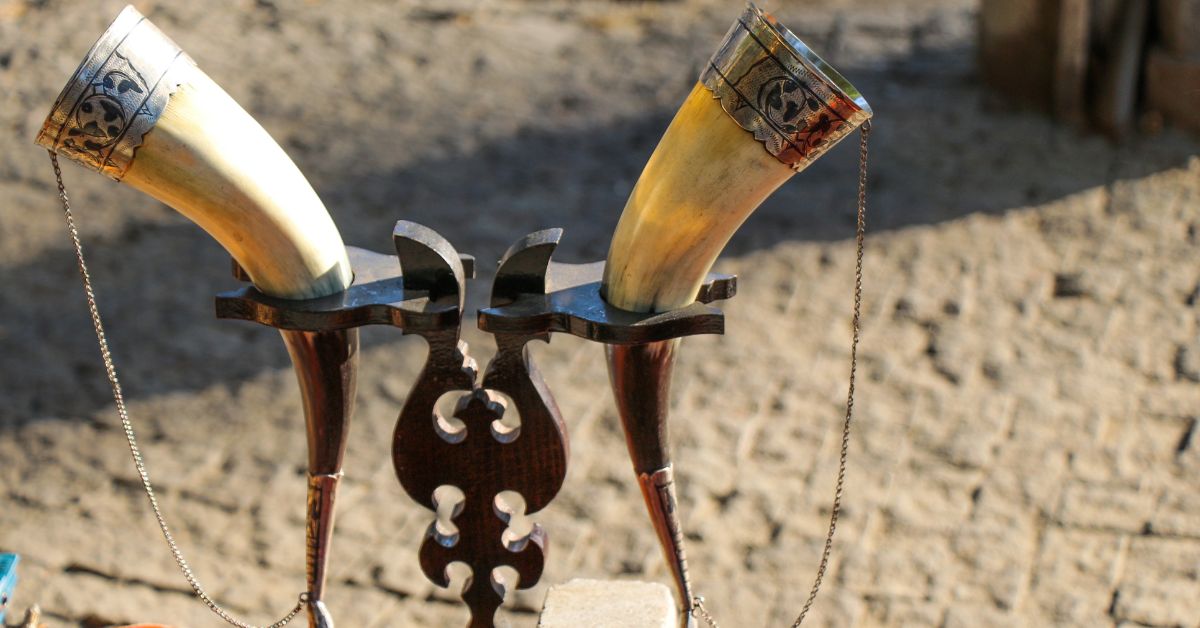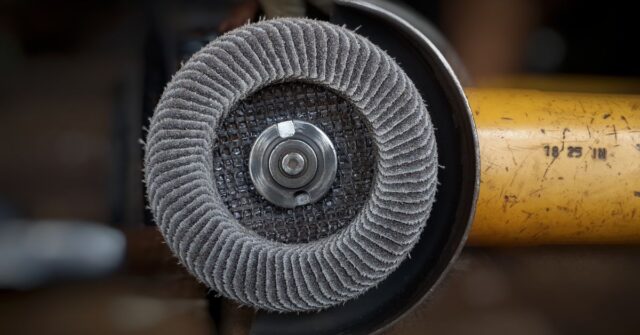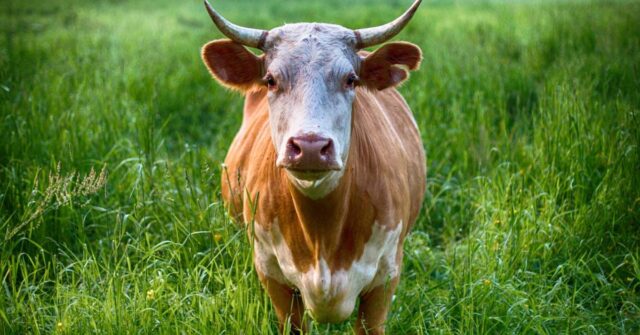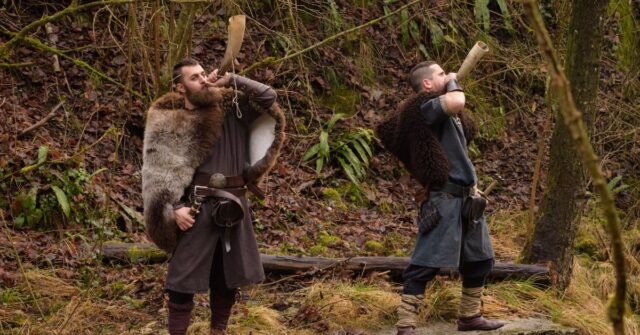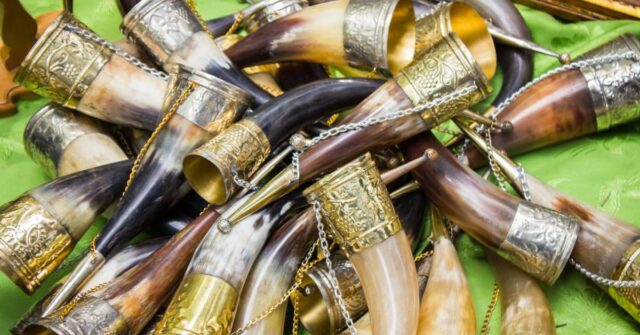Drinking horns are fascinating artifacts with a rich history, from ancient ceremonial use to modern-day collectibles.
This study delves into the economics of drinking horn production, covering historical context, production methods, market trends, and consumer insights.
.Whether you are a potential buyer or an enthusiast, this comprehensive guide will provide valuable insights into the world of drinking horns.
Historical Context and Cultural Significance
Drinking horns have been used for millennia, originating in ancient cultures that prized them for both practical and ceremonial purposes.
These vessels have a rich history, symbolizing power, status, and tradition across various civilizations.
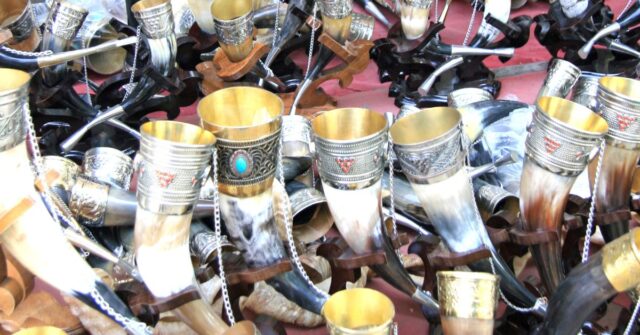
Origins of Drinking Horns
The use of drinking horns can be traced back thousands of years. Ancient peoples, such as the Scythians and Greeks, used animal horns as drinking vessels.
The Scythians, for instance, crafted drinking horns from precious metals for their elite, while Greeks depicted gods like Dionysus drinking from horns.
These early uses set the stage for the drinking horn’s enduring cultural significance.
Drinking Horns in Different Cultures
Different cultures have their unique associations with drinking horns. In medieval Europe, drinking horns were often used in feasts and ceremonies.
The Vikings, perhaps most famously, used drinking horns extensively, both in everyday life and in their rich mythological traditions.
The symbolism of drinking from a horn, representing strength and unity, was common across these cultures.
Symbolism and Ceremonial Uses
Drinking horns were not just practical items; they held deep symbolic meaning.
In many cultures, drinking from a horn was a ceremonial act, often linked to rites of passage, celebrations, and religious rituals.
The act of sharing a drink from a horn could symbolize community and camaraderie, while the ornate designs of some horns signified the owner’s status and wealth.
Modern Production Techniques
While the traditional methods of making drinking horns have largely remained the same, modern production techniques have introduced new materials and processes, ensuring safety and durability while preserving authenticity.
Traditional Methods
Traditional drinking horns are made from bovine horns, which are cleaned, cured, and sometimes adorned with carvings or metalwork.
The process involves several steps: boiling the horn to remove the core, shaping it through heating, and sealing it with beeswax to make it safe for drinking.
These methods have been passed down through generations, maintaining the historical craftsmanship.
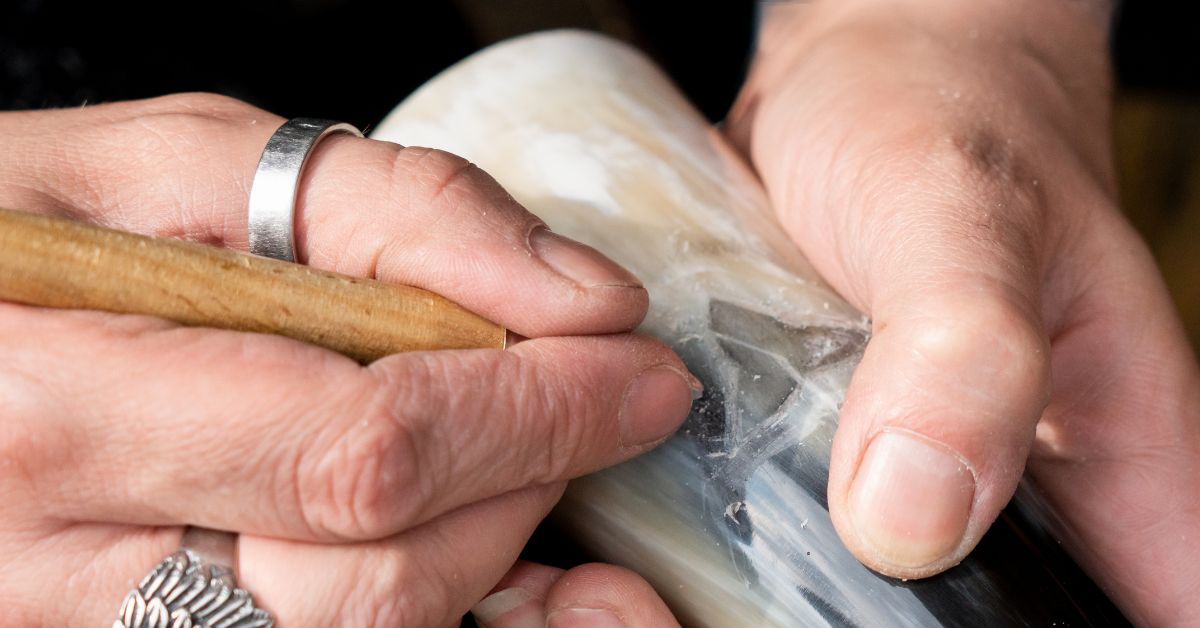
Modern Innovations
Today, manufacturers also use synthetic materials to create drinking horns. These materials mimic the appearance and feel of real horns but are often lighter and more durable.
Modern sealants and finishes ensure that both traditional and synthetic horns meet food safety standards.
These innovations allow for a wider variety of designs and applications, catering to diverse consumer preferences.
Material Considerations
The choice of material significantly impacts the production cost and quality of drinking horns. Natural horns, sourced from cattle, require careful handling to ensure they are safe and durable.
Synthetic alternatives, while potentially cheaper, involve different manufacturing processes. Both types must meet stringent safety standards to be suitable for use as drinking vessels.
Quality and Craftsmanship
The quality of a drinking horn depends on the craftsmanship involved in its production.
Skilled artisans can create intricate designs and durable finishes, enhancing the horn’s aesthetic and practical value.
Whether using traditional methods or modern techniques, the emphasis is on creating a product that is both beautiful and functional.
Market Trends and Consumer Preferences
The market for drinking horns has seen a resurgence, driven by a renewed interest in historical reenactments, fantasy culture, and unique drinking experiences.
Understanding these trends and preferences is crucial for producers and sellers.
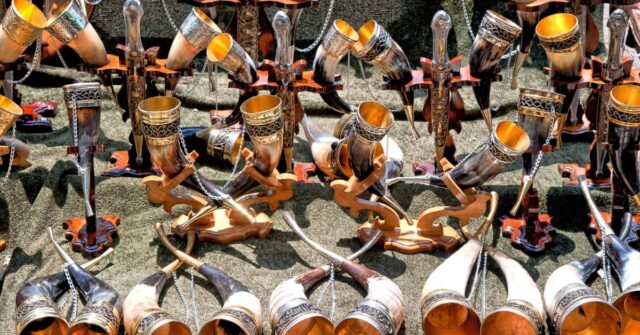
Rising Popularity
The popularity of drinking horns has grown in recent years, fueled by media portrayals in shows like “Vikings” and “Game of Thrones.”
This renewed interest has expanded the market, attracting new enthusiasts and collectors who value the historical and cultural significance of these items.
Key Consumer Segments
The primary consumers of drinking horns include historical reenactors, participants in medieval fairs, and fans of fantasy literature and games.
These groups appreciate the authenticity and unique experience offered by drinking horns, making them a significant market segment.
Influence of Pop Culture
Pop culture has played a significant role in the resurgence of drinking horns.
Iconic portrayals of characters using these vessels in movies and TV shows have made them desirable items for fans.
This influence has broadened the appeal of drinking horns beyond traditional historical enthusiasts.
Production Costs and Economic Viability
Producing drinking horns involves various costs, from sourcing materials to labor and crafting. Understanding these costs is essential for assessing the economic viability of this niche market.
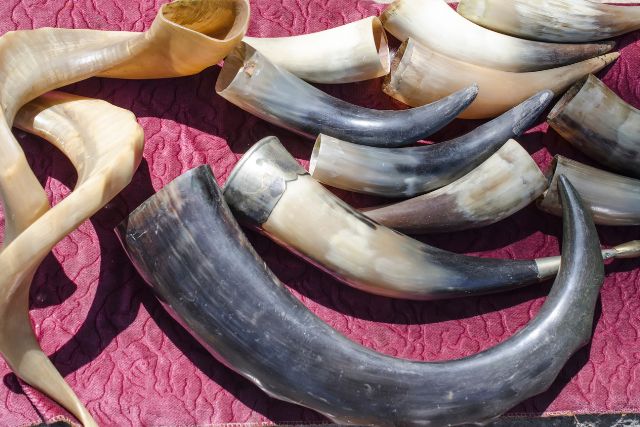
Cost of Materials
The materials used in making drinking horns significantly impact production costs. Natural horns, sourced from cattle, can be expensive and require careful processing.
Synthetic materials may reduce costs but involve different manufacturing techniques. Both options have their advantages and challenges.
Labor and Crafting Expenses
Crafting drinking horns requires skilled labor, especially for traditional methods involving detailed carvings and metalwork.
These labor costs contribute significantly to the overall production expenses.
Modern manufacturing processes may lower some of these costs but still require skilled oversight to maintain quality.
Pricing Strategies
Pricing drinking horns involves balancing material and labor costs with market demand.
High-quality, traditionally crafted horns can command premium prices, while more affordable options cater to a broader audience.
Effective pricing strategies consider production costs, consumer preferences, and competitive positioning.
Scalability and Efficiency
Scalability is a challenge in the drinking horn market. While handcrafted horns offer unique appeal, they limit production volume.
Modern manufacturing techniques can increase efficiency, allowing producers to scale up production and meet growing demand without compromising quality.
Market Analysis and Competitive Landscape
The drinking horn market, though niche, is competitive. Key players include specialized artisans, historical reenactment suppliers, and online retailers.
Understanding the competitive landscape is essential for positioning and growth.
Key Players in the Market
Several key players dominate the drinking horn market, including artisans who create bespoke items, retailers specializing in historical reenactment gear, and online platforms that reach a global audience.
These players cater to different segments, from high-end collectors to casual buyers.
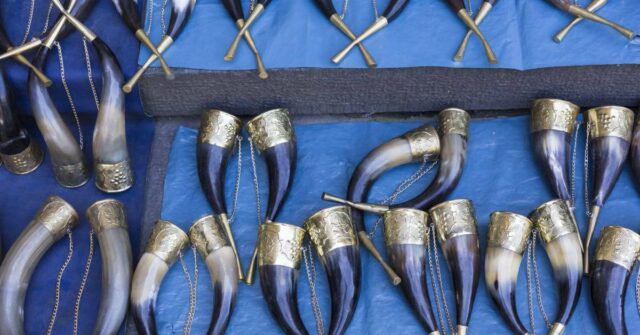
Product Differentiation
Product differentiation is crucial in this market. Unique designs, historical authenticity, and customization options set apart high-quality drinking horns.
Artisans and manufacturers who offer bespoke services and personalized designs can attract discerning customers looking for one-of-a-kind items.
Distribution Channels
Drinking horns are sold through various channels, including specialty shops, online marketplaces, and historical reenactment events.
Online sales platforms allow producers to reach a broader audience, while physical stores and events provide opportunities for direct customer engagement and sales.
Market Share and Growth Potential
Despite its niche status, the drinking horn market has significant growth potential.
The rising interest in historical and fantasy cultures, combined with effective marketing and product differentiation, can drive market expansion.
Understanding consumer trends and leveraging modern production techniques will be key to capturing a larger market share.
Consumer Insights and Demand Drivers
Understanding what drives consumer demand for drinking horns is crucial for producers and sellers. This section explores the key factors influencing buyer behavior and preferences.
Cultural Trends
Cultural trends play a significant role in the demand for drinking horns.
The popularity of medieval and Viking-themed media has sparked interest in historical artifacts, making drinking horns desirable collectibles.
These trends influence consumer preferences and buying behavior.

Historical Reenactments and Events
Historical reenactments and events are major demand drivers for drinking horns.
Participants seek authentic accessories to enhance their experiences, making drinking horns popular items.
These events also provide opportunities for producers to showcase their products and engage with potential buyers.
Gifting and Collecting
Drinking horns are popular gifts and collectibles, valued for their uniqueness and historical significance.
Collectors and gift buyers look for high-quality, aesthetically pleasing items that offer a connection to the past.
Producers who cater to this market segment can attract discerning customers.
Customization and Personalization
Customization options, such as personalized carvings and designs, add significant value to drinking horns.
Consumers appreciate the ability to tailor their purchases to their preferences, making customized items highly desirable.
Offering bespoke services can differentiate producers in the market.
Challenges and Opportunities in the Market
The drinking horn market faces several challenges but also offers opportunities for growth and innovation. Understanding these factors is essential for navigating the competitive landscape.
Regulatory and Ethical Considerations
Producers must navigate regulatory and ethical considerations, especially regarding the sourcing of natural materials.
Ensuring that horns are ethically sourced and processed in compliance with regulations is crucial for maintaining market credibility and consumer trust.
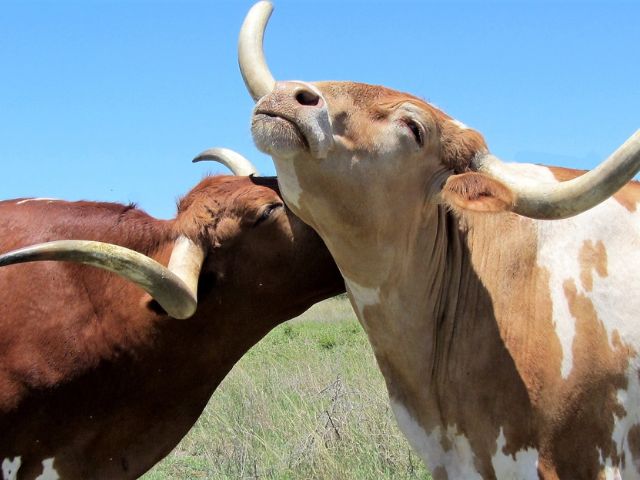
Sourcing Sustainable Materials
Sustainability is increasingly important to consumers. Sourcing materials responsibly and adopting eco-friendly production practices is crucial for long-term market success.
Producers can leverage sustainable practices to appeal to environmentally conscious consumers.
Balancing Tradition with Modernity
Producers face the challenge of balancing traditional craftsmanship with modern production techniques.
While traditional methods offer authenticity, modern techniques can enhance efficiency and scalability.
Finding the right balance is key to meeting consumer expectations while maintaining quality and authenticity.
Future Market Predictions
The drinking horn market is poised for growth, driven by increasing interest in historical and fantasy cultures.
Producers who can innovate while maintaining authenticity will likely see continued demand.
Emerging trends, such as the use of sustainable materials and personalized designs, will shape the future of the market.
Conclusion
The economics of drinking horn production involves a blend of historical traditions and modern innovations.
Understanding market trends, consumer preferences, and production challenges is essential for success in this niche but growing market.
As interest in historical artifacts and unique drinking experiences continues to rise, the drinking horn market offers ample opportunities for artisans and producers alike.

Additional Resources
For those interested in learning more about the history and production of drinking horns, several books and articles provide in-depth information.
Recommended readings include “The Viking Way” by Neil Price and “Drinking Horns: A Guide to Their History and Use” by John R. Franklin.
Care and Maintenance Tips
Proper care and maintenance are essential for preserving the quality and longevity of drinking horns.
Tips include cleaning the horn with warm water and mild soap, avoiding harsh chemicals, and storing it in a cool, dry place.
Regularly inspecting the horn for damage and applying food-safe sealants can also help maintain its condition.
